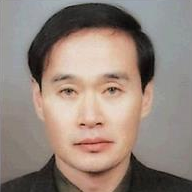Recent Advances in Synthetic Dye and Coloration
A special issue of Applied Sciences (ISSN 2076-3417). This special issue belongs to the section "Chemical and Molecular Sciences".
Deadline for manuscript submissions: closed (30 August 2023) | Viewed by 3552
Special Issue Editors
Interests: dye synthesis; high heat-stable dyes for color filters; fluorescent dyes for artificial photo-synthesis
Special Issues, Collections and Topics in MDPI journals
Special Issue Information
Dear Colleagues,
The first discovery of synthetic dye, called Mauveine, was achieved by W. H. Perkin in 1856. In recent decades, research has been focused on advanced dyes based on highly conjugated aromatic molecules featuring new functions, such as fluorescence emission, energy generation materials, and bio-labeling materials; these have been applied on various industrial segments.
A Special Issue entitled “Advances in Synthetic Dyes and Coloration” aims to publish recent research results in functional dyes and their coloration technologies. To fulfill this aim, research papers and reviews in these areas of advanced dye chemistry are welcomed for submission. The Special Issue will contain articles on dye syntheses based on mainly organic species and investigations into their functionalities. Dye structural and spectroscopic studies will also be included.
Prof. Dr. Jae-Hong Choi
Prof. Dr. Jong-Wook Park
Guest Editors
Manuscript Submission Information
Manuscripts should be submitted online at www.mdpi.com by registering and logging in to this website. Once you are registered, click here to go to the submission form. Manuscripts can be submitted until the deadline. All submissions that pass pre-check are peer-reviewed. Accepted papers will be published continuously in the journal (as soon as accepted) and will be listed together on the special issue website. Research articles, review articles as well as short communications are invited. For planned papers, a title and short abstract (about 100 words) can be sent to the Editorial Office for announcement on this website.
Submitted manuscripts should not have been published previously, nor be under consideration for publication elsewhere (except conference proceedings papers). All manuscripts are thoroughly refereed through a single-blind peer-review process. A guide for authors and other relevant information for submission of manuscripts is available on the Instructions for Authors page. Applied Sciences is an international peer-reviewed open access semimonthly journal published by MDPI.
Please visit the Instructions for Authors page before submitting a manuscript. The Article Processing Charge (APC) for publication in this open access journal is 2400 CHF (Swiss Francs). Submitted papers should be well formatted and use good English. Authors may use MDPI's English editing service prior to publication or during author revisions.
Keywords
- dye
- coloration
- dyeing
- chromophore
- synthesis
- pigment






